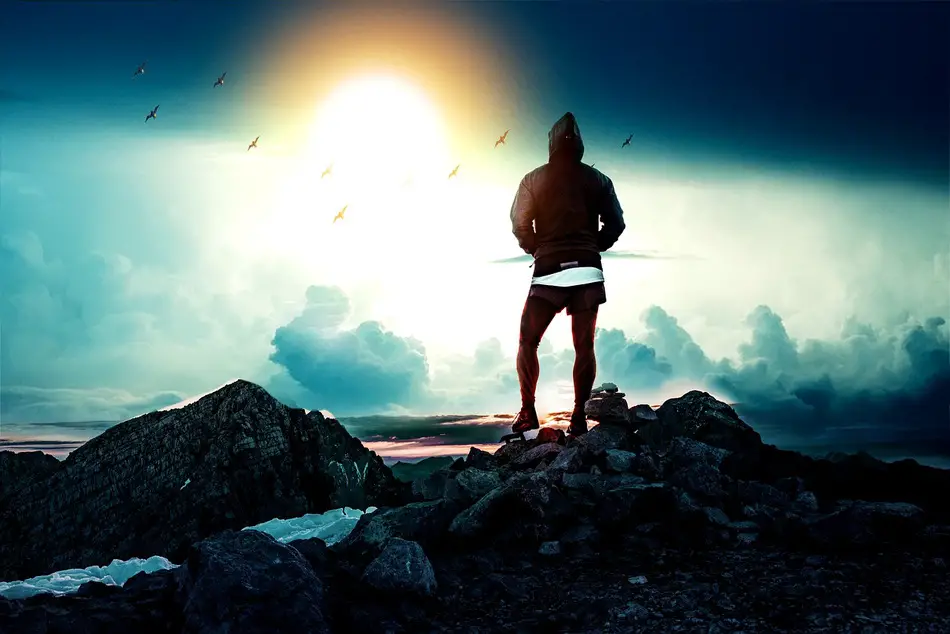For as long as humanity knows itself, surviving in the wilderness was always a number one challenge and priority. Humans were always determined to overcome whatever difficulties piled on their trail through the wild – and then shared their inspiring stories.
I have gathered here 20 of the best and most amazing and incredible wilderness survival stories, about real people who faced injuries, cold, starvation, dehydration, loss of navigation, and death. And yet they lived to tell the tale of their bravery. I think that there is a lot we can learn from them.
Some of the survival stories are summarized in the following video:
Aron Ralston: 127 Hours
This famous survival story is not for those with a weak stomach. Aron Ralston experienced a climbing accident, and as a result he was stuck between boulders and had to amputate his own hand. He was later portrayed by James Franco in a well-known movie, “127 Hours”.
Ralston’s passion for climbing took him to Utah, to Blue John Canyon. He was alone. He never told a living soul where he is planning to go. He was lowering himself into a canyon, but then a boulder fell from above and completely trapped his hand. And since he went alone, nobody knew where to look for him. Ralston had only a small portion of food and water. After trying to free himself for 3 straight days, he had to make the extremely tough decision to cut the hand. What followed is two more horrible days of him unsuccessfully attempting different ways of self-amputation. He also had no water left and had to drink his urine.
On day 6 he came up with a solution – breaking the bones in order to make an easier hand amputation. What came afterwards was an hour of self-surgery with a basic multi-tool that I would not wish on my worst enemies. Finally, he was free. Using only one hand, he climbed down a 65 ft. of rock wall and reached his vehicle.
A camping family found him, and in a few hours the authorities picked him up. The rescue was very timely, as he was about to depart this world due to the tremendous volume of blood that he lost. Ralston’s spirit was not crashed, though. He still climbs and hikes in the wilderness, only now he makes sure to tell his loved ones where he intends to trek (tough lesson learnt). He also tours with lectures about his life and the movie that was made about him. He has written the book “Between a Rock and a Hard Place” (available on Amazon) that describes in details this extraordinary experience.
Hugh Glass: The Real Story Behind The Revenant
Many of us are familiar with “The Revenant”, the film that finally gave Leonardo DiCaprio the long-awaited Academy Award. However, the movie does add a few scenes that did not occur in reality. For instance, there wasn’t a shootout like in the final part. Moreover, Hugh Glass, the main protagonist, did not have a son who was killed before his eyes.
Nonetheless, Hugh Glass’s real story is still incredible. In August 1823 there was an expedition led by Andrew Henry, for the purpose of fur trapping. Unfortunately for Glass, he stumbled upon a female grizzly bear, who wanted to protect her two little cubs and attacked Glass, severely injuring him. Bridger (17 years old) and Fitzgerald, his fur trapping partners, helped him killing the bear. Glass was unconscious and terribly wounded, so Henry assumed that Glass will not survive. Being the leader, Henry asked for two men to remain with Hugh Glass until he passes away. Bridger and Fitzgerald volunteered to stay behind and dig the grave, but then they abandoned Glass and told Henry that he died.
Glass woke up and saw that he was left behind with no equipment or guns, his leg broken, his wounds severely infected, his ribs exposed due to the gashes he received from the bear. The nearest civilization post was 200 miles away, Missouri’s Fort Kiowa. Glass had no choice but to set the leg, cover himself in the bear hide and crawl towards the settlement. He mainly fed on roots and berries.
After six weeks of this hellish journey, he came across the Cheyenne River, where he made a simple raft and floated along the stream. He encounters some helpful natives, who covered his wounds by sewing the hide to his mauled back. Finally, he was at Fort Kiowa, where had stayed to recuperate for a long time.
The final part of this crazy journey was his revenge hunt for the two betraying partners. He found Bridger by the Bighorn River, but did not kill him. Perhaps Bridger’s young age made Glass fell merciful toward the abandoner. Fitzgerald was spared as well. Glass did find him, but it turned out that Fitzgerald had enlisted, and killing a US soldier was punished by execution. This thrilling revenge tale is told in the book “The Revenant: A Novel of Revenge”, which has over 2,000 positive reviews on Amazon.
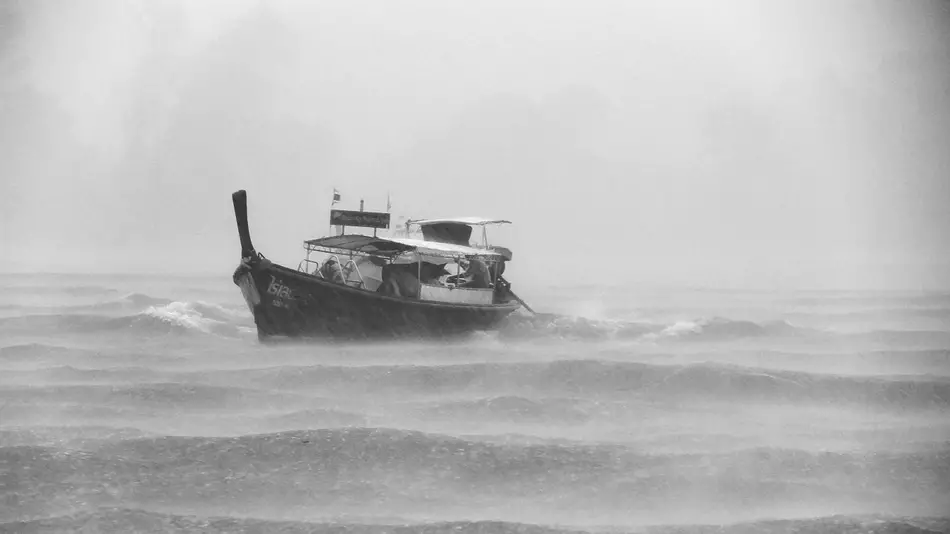
The Mexican Fishermen: Living on a Prayer
On October 28, 2005, 5 fishermen left their Mexican village to fish for sharks. They planned to be away for a few days, but fate had other plans. First they lost their tackle, then they lost their fuel while searching for the tackle. They were “dead in the water”. The winds and the current pushed them even further away from the shores, some 5000 miles into the ocean. Two of the men, Juan David (the boat owner) and “El Farsero”, eventually starved to death and had to be buried in the ocean. Their rescue near the Marshall Island by a Taiwanese trawler came… 9 months and 9 days later! Their incredible survival at the heart of the sea is one of the longest among the recorded similar stories. Knowing that they can starve and perish, the three remaining men had to sustain by fishing as well as catching seabirds and eating the birds as they are, uncooked.
The survivors had to improvise, since they had so little equipment left. They made a new tackle from parts of engine and cables. The most prepared of them was Salvador Ordóñez, who brought a Bible and a knowledge he acquired from a sea survival course he took. His friends nicknames him “The Cat”, because he was very good at stalking and catching the seabirds that happened to land on their board. The three men, Lucio Rendón, Jesús Vidaña and Salvador Ordóñez, passed time mostly by fishing and praying. They managed to survive vicious storms during the fall season, and drank the rain water in order to stay hydrated. When there was no rain, they drank fish blood. To keep their sanity and spirit up, they entertained themselves by dancing, singing and reading from the Bible.
The worst times for them were December and January. Tremendous storms prevented them from fishing and almost sank them. One time they had nothing to eat for thirteen days, except for a single raw seabird that they had to split between the three. A truly amazing survival story!
Steven Callahan: Adrift for 76 Days
January, 1981. Steven Callahan has just finished crossing the Atlantic Ocean in a small sloop and headed back home. One day a storm was gathering around the boat, and by an unfortunate coincidence, there was a hole in the hull, probably made by some large sea creature.
The boat started sinking. Callahan rapidly freed a six foot raft from the submerging ship and loaded it with his survival gear. He had water and food for just a few days and was adrift hundreds of miles west of the Canaries, with the current taking him even further. Using his survival know-how, Callahan had to improvise. He used a solar still to desalinate sea water, and his spear gun to catch fish. Two weeks later a ship passed him, but they did not notice his signals.
30 days passed, and the shipping lanes were no longer crossing his path. 20 more days later, and there was a hole in the raft that he had to close somehow, while being dehydrated and covered with salt water sores.
His rescue came on day 76, when he was spotted near Guadeloupe, thanks to the fish and the birds that followed his battered raft when he was throwing out fish intestines. By this time he was totally drained of energy, and he also lost at least 1/3 of his weight. Callahan describes his life changing story in the book “Adrift: Seventy-six Days Lost at Sea” that currently has over 680 favorable reviews on Amazon.
The Lykov Family: Decades in Siberia
One of the most incredible survival stories takes place in the year 1936, when the new Communist regime in Russia was persecuting people who were still practicing religion. The Lykovs escaped into the wilderness of Siberia. They were a family of four, Karp and Akulina, husband and wife, as well a son, 9 years old, and a daughter, only two years old. They took only seeds and some tools with them. They erected a series of simple huts to live in, until finding a suitable patch of land near Mongolia. This became their permanent home for the next several decades. The Lycovs gave birth to another two kids and lived in wild, without depending on the civilization. The first people they saw since fleeing was a team of geologists in 1978, who happened upon their house.
They survived by trapping animals, hunting and farming. The seeds of their crops were replanted the next year. The food was precisely rationed to meet everyone’s needs, but also to last longer. They made fiber out of hemp that they farmed, and using a primitive spinning wheel they made clothes for their family of six.
For almost 50 years the Lykovs lived in the woods, self-efficiently, depending on each other and on their faith. They faced starvation in every winter and had to decide how much of the seeds they would save for the next season and how much should be consumed. The priority was always to save the seeds, which eventually lead to mother’s unfortunate death during one of the harshest winters.
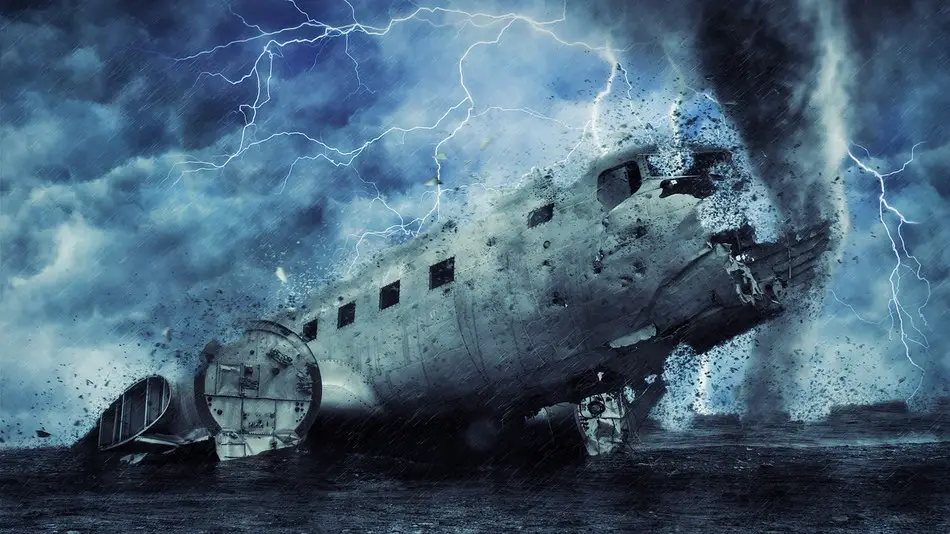
Juliane Koepcke: Surviving the Odds, Twice
1971, Christmas. LANSA Flight 508 is struck by lightning and starts falling apart in the air. Juliane Koepcke falls down, strapped to the seat, the rain forest of Peru stretching to the horizon at least two miles beneath her feet.
She survives the deadly fall. Bruised, injured, broken collarbone, but at least alive, the only surviving passenger of that plane. Luckily she came upon a stream and made sure to stay hydrated and she followed. She only ate candy that she had on her.
As she travelled downstream, her situation worsened. She was constantly attacked by ravenous insects. Her arm was infected by maggots. 9 days later she found a campsite, where she used some basic first aid, as well as poured gasoline on the infected area. Hours later, lumber workers came back to the encampment and took her to an actual settlement. From there, she was transported by air to a nearby hospital.
In 2000, a director named Warner Herzog told her amazing story in a documentary titled “Wings of Hope”. He also revealed that he was supposed to fly in the same plane, but cancelled his booking in the last moment. As for Juliane Koepcke, she authored the popular book titled “When I Fell from the Sky: The True Story of One Woman’s Miraculous Survival”, which you can get on Amazon.
Ann Rodgers: Surviving the Desert
This incredible survival story place relatively recently, in 2016, in eastern Arizona. Ann Rodgers, 72 years old, got lost on some distant dirt road and eventually was out of gas. On March 31, her family reported her missing. Rodgers could not contact anyone, as there was no mobile reception in her area. On the first night she stayed in her car, which was the right thing to do. The car had additional warm clothing, and some water and food. On the following day she did the wrong thing – left the car. She should have remained at the same spot, since the police located the deserted vehicle on April 3.
Despite the wrong decision, Ann survived thanks to the skills acquired at a survival course, as well as her accumulated knowledge on desert survival. She was successful at building a fire to warm herself up on every night. She stayed hydrated by drinking from ponds. She caught and roasted a turtle. She recognized edible plants.
Rodgers was frustrated that no one came for her at first, although she knew that people who cared for her will eventually find her. Nonetheless, everyone was searching for Ann, using aircraft, dogs, and the entirety of local police force. She was located thanks to a large HELP mark she made with rocks and wood, which was spotted by a helicopter pilot. At this point, 9 days passed since her disappearance. The pilot was shocked, since he assumed they were searching for a dead body. He collected Rodgers and took her to a hospital. The surviving woman was soon released home.
Yossi Ghinsberg: A Harrowing True Story of Survival
The year was 1981. Four adventurers, including the hero of this story, Yossi Ghinsberg, were trekking through the Amazon region in Bolivia. They faced two weeks of unpleasant conditions and decided to split. Two of them were never seen, and their fate is unknown. Ghinsberg and Kevin (Yossi’s friend) were determined to travel by a river using a raft. Their journey was smooth until they encountered a waterfall. Yossi Ghinsberg went over the gushing waterfall, and Kevin lost sight of him.
Ghinsberg had to survive in the jungle on his own for 3 weeks. He faced a deadly jaguar and had to set a bug repellent on fire to scare the beast away. He ate raw eggs from every nest he could find. Naturally, this was not enough food to sustain him. Moreover, he was attacked by fire ants and termites. He admitted that he was so hungry, that he could have eaten human flesh. At certain parts of this crazy journey he started hallucinating, imagining a non-existent native woman that was accompanying him.
Meanwhile, Kevin was leading the search for Yossi, using local people to help him. By sheer luck, his boat arrived to the same spot where Ghinsberg had finally collapsed. Ghinsberg has authored a book based on his hellish experience, “Jungle: A Harrowing True Story of Survival in the Amazon” (available on the Amazon store), which was later made into a movie starring Daniel Radcliffe.

Ricky Megee: The Amazing Australian
January, 2006. Ricky Megee was driving in Northern Territory, Australia. 3 hikers signaled his car, pretending they are out of gas. But in fact, they were robbers. They spiked Ricky’s water, and while he was out, they took all his possessions and drove away, leaving him behind in a shallow grave.
Megee’s situation was completely hopeless. He was utterly stranded, with no food, water, footware, phone. He did not eat for 5 days and had to drink the urine. He came upon a damn, which provided him with water and small animals to eat – mostly leeches, lizards and amphibians. After a few more days under the scorching sun, exhausted Megee came upon a dam with cleaner water, where he remained for about 2 months. He was rapidly losing weight, since eating insects is not exactly a rich diet. He became lifeless, with not enough energy to even drink water, or wake up and move.
His luck changed after 71 days of this ordeal, when a station crew surveyed the nearby area and noticed him. At this point he was little more than a living skeleton. Nonetheless, he survived and lived to tell the story in his book “Left for Dead: How I Survived 71 Days in the Outback”, which you can get on Amazon.
Joe Simpson and Simon Yates: The Fated Descent
This is another amazing survival experience, which inspired the “Touching the Void” movie. Joe Simpson and Simon Yates were climbing down the Siula Grande peak, Peruvian Andes. They successfully reached the top of the 21000ft. peak, but the descent was challenging and troublesome, to say the least. Simpson was injured, when he fell and his leg was broken. And then they were hit by a sudden snowstorm that blinded them.
Yates tried helping Simpson. He laid Simpson down on an improvised stretcher. A rope was tied to the stretcher, and Yates was slowly lowering the whole thing until the ropes length was reached. However, by an accident, Simpson was lowered over a crevasse and it was way too deep for the rope. Yates was getting pulled by all this weight toward the cliff, and had to make the hard decision of cutting the rope. Simpson, of course, fell into the chasm. But he did not die; instead, a shelf inside the crevasse broke his fall. Yates was not aware of this, he went back to the camp, feeling guilty and grieving.
By a twist of fate, cutting the rope proved to be the decision that saved both of their lives. The soft snow inside the crevasse absorbed Joe Simpson’s fall, and he remained conscious and alive. For the next excruciating 60 hours he crawled six miles to the campsite. His friend was relieved to discover that Simpson was not killed by him. This insane ordeal was documented in Joe Simpson’s famous book, “Touching the Void: The True Story of One Man’s Miraculous Survival” (available on Amazon), and later the aforementioned movie.
Marcus Mazzaferri: The Lost Footprints
This took place in May 2017, at Yosemite National Park. Marcus Mazzaferri tried to traverse a river by foot, but then slipped on a rock at a deeper spot. The rapid pulled him on, his glasses and gear were gone, but eventually he reached a river bank. He was aware that his situation is dire, but he was not going to give up. He was determined to survive, because he simply did not want a sad book written about him.
Challenged by cold and darkness, barely seeing without his glasses, he tried to make his way back using his footprints. The circumstances forced him to stay for the night. Fighting the deadly hypothermia, Mazzaferri rested for 20 minutes, then exercised to prevent numbness, then 20 more minutes of rest. He continued his journey at the dawn, but eventually could not find the footprints. He decided to hike using deer tracks, and only then was he successful in finding the way to his footprints.
The prints disappeared after a while and he could not find the right direction. However, sounds of a plow crew reached him from the other side of the river. Even though he was cold and the river was dangerously freezing, he swam toward the friendly voices and was saved.
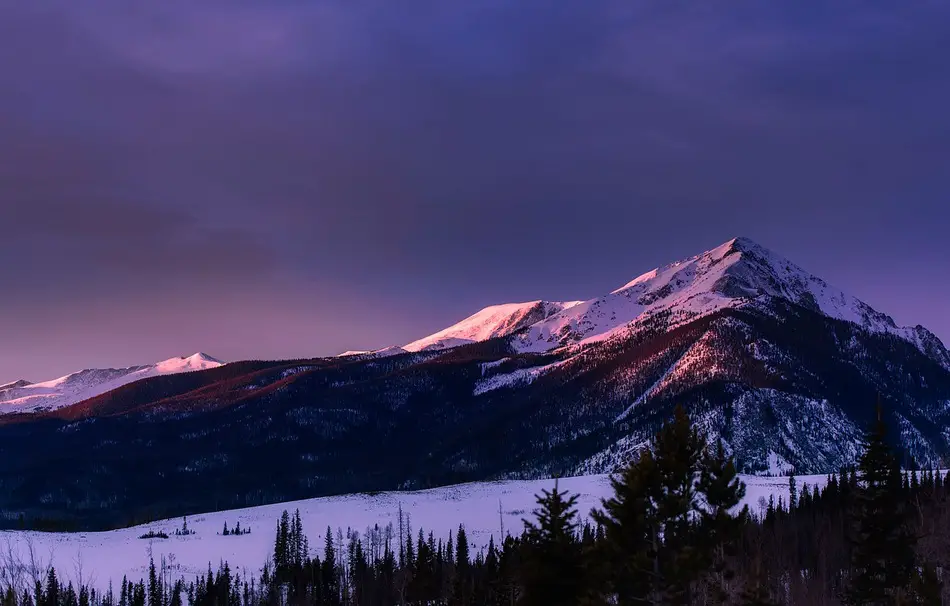
Matthew Smith and Tommy Hendricks: Fighting the Deadly Cold
In November 2016, two teenagers named Matthew Smith and Tommy Hendricks where climbing up the 1200 feet of Cross Couloir, in Colorado. They were surprised by a snowstorm that came a day too early than predicted. The storm, the snow, the approaching darkness have eliminated the option of descending back. With the insane winds and freezing temperatures around them, they tried to fight the frostbite by rubbing feet in a friend’s armpits.
The lived through the night and tried to climb down in the morning. They had no cell reception and no food. They were lost because they took the wrong path, and the traces of iron in the surrounding rocks interfered with the compasses. The soaks lighters did not function, they could not light a fire, and understood that they are about to die.
The hypothermia was taking over, but luckily for them, a helicopter found them in time. At first it circled and left them. It came back for them an hour later, as the friends were losing all hope. As it turned out, it simply needed to refuel.
Graham Austin: Riding the Lightning
This was one of the most outstanding mountain survival stories. It took place on the Appalachian Trail on July 3, 2011. A storm gathered above a group of hikers, and suddenly one of them, Graham Austin, was struck by a lightning! His friends were only superficially injured as they fell back, but Austin suffered the full power of the lightning. His clothes were obliterated, his muscle felt incredibly stretched, like a bowstring. A huge scar formed on his body, trailing from head to feet.
For half a minute, his heart stopped beating, he could not breathe, his legs became paralyzed, deprived of blood and turned dark purple. But his friends brought him back to life, performed CPR to make his heart beat, got him breathing again, and massaged his legs until blood returned to the vessels. Graham Austin survived thanks to the friends. His legs still couldn’t quite function, so when the rescue finally got there, he had to be carried from the mountain.
Austin eventually got the control of his legs back, and after about a day in the hospital, he has almost completely recovered. A month after this ordeal, his muscles were functioning properly. The only souvenirs from this terrifying experience were the long scar and the memory of nearly escaping certain death.
“The Gremlin Special” Crew: US Air Force VS Cannibals
“The Gremlin Special” was US Air Force plane that crashed at mountain. It happened on May 13, 1945, in New Guinea. Out of 24 people, only 3 survived, two of them were seriously injured. Lt. John McCollom, Sgt. Kenneth Decker and Cpl. Margaret Hastings discovered to their amazement that they crashed in a territory, which was never visited by the modern civilization. The natives, as it turned out, were a tribe of cannibals. But at least they were the kind of cannibals that only eat their enemies.
The officers lived among the natives for 42 days, and were in fact nursed back to health. Eventually a rescue team arrived, and the survivors safely left the cannibal island.
Here is a short documentary about “The Gremlin Special”:
Mike Vilhauer: The Worst Fishing Day
On August 6, 2014, a Californian named Mike Vilhauer was roaming the wilderness looking for grasshoppers to use as a fishing bait. He did not pay attention to the time, and the hour was getting late. So he camped beneath a pine, but on the following day succumbed to dehydration and hunger.
He went into a full survival mode, drinking dirty puddle water to combat the thirst. He tried to leave the mountain he was on, but without proper navigation he was simply wandering in circles. He tried to follow a river, but it did not lead him back to the civilization.
Four days passed. At this point he was exhausted, hungry, sick and out of ideas how to get back. He started carving a last letter to the wife on a wood. Additionally, he placed needles on the ground in the form of the word HELP, his last attempt to attract attention to his whereabouts.
He was found on the next day by the largest rescue initiative in the recent months. This was the last time he went fishing unprepared, without bait. Lesson learnt.
Lt. David Steeves: The Vanished Pilot
Perhaps one of the most incredible stories of survival is also a remarkable story of vindication. Lt. David Steeves was a top-notch U.S. Air Force Pilot in the 1950s, but it wasn’t his impeccable flying that made him a household name. The pilot was ordered to fly a highly classified new fighter jet prototype from San Francisco to Craig, Air Force Base, near Selma Alabama on 9 May, 1957. Not long after he took off, he disappeared from radar and following a search which turned up nothing, was unjustly accused of stealing the jet to turn it over to the Soviet Union, himself defecting in the process. It was believed he was a traitor.
Until, of course, the following July when he walked out of the Sierra Nevada Mountains and flagged down a pickup truck passing along a highway. He was malnourished, wearing only his flight boots and his government-issued tighty-whities which were all but threadbare. Once he was back to civilization he recounted the story of how an engine component of the experiential jet had exploded not long after takeoff. He had been forced to eject as the plane itself exploded into millions of pieces only a moment later. He parachuted down into the mountains where he landed hard and was knocked unconscious.
His flight suit was shredded by the trip through the tall pines, and he was bleeding from several deep abrasions. He tried for two weeks to find his way to a road, not eating the entire time and fending off wild animals with sharp sticks and his sidearm, at least until he ran out of ammo. Finally, he had managed to make his way to a ranger’s cabin where he found some simple supplies and fish hooks but no clothes or blankets. He survived for a couple of weeks till his wounds were healed enough to try to hike.
Slavomir Rawicz: The Real Great Escape
Slavomir Rawicz was a Polish officer who had been, along with several others, sentenced unjustly to a Siberian work camp. He had no intention of spending 25 years in the dreadful place, stripped to his underwear, living on bare rations and working himself to death for war crimes he had not committed. Instead, he and six others managed to secret away some clothing and then escaped from the camp.
They began their arduous trek, one that would take them more than 4000 miles through rough terrain, covering The Gobi Desert, The Siberian Tundra, and finally through Tibet and over the Himalayas, until they reached British India where they were able to get asylum, and assistance getting back to Poland eventually. The trip took more than 9 months, and the men had only the things they were able to scavenge or find to survive with. Miraculously, they all managed to make it to India, and went on to have productive lives once reunited with their families. This amazing story was immortalized in the best-selling book, “The Long Walk: The True Story Of A Trek To Freedom”, which you can get on Amazon, and also in the great 2010 movie, “The Way Back”.
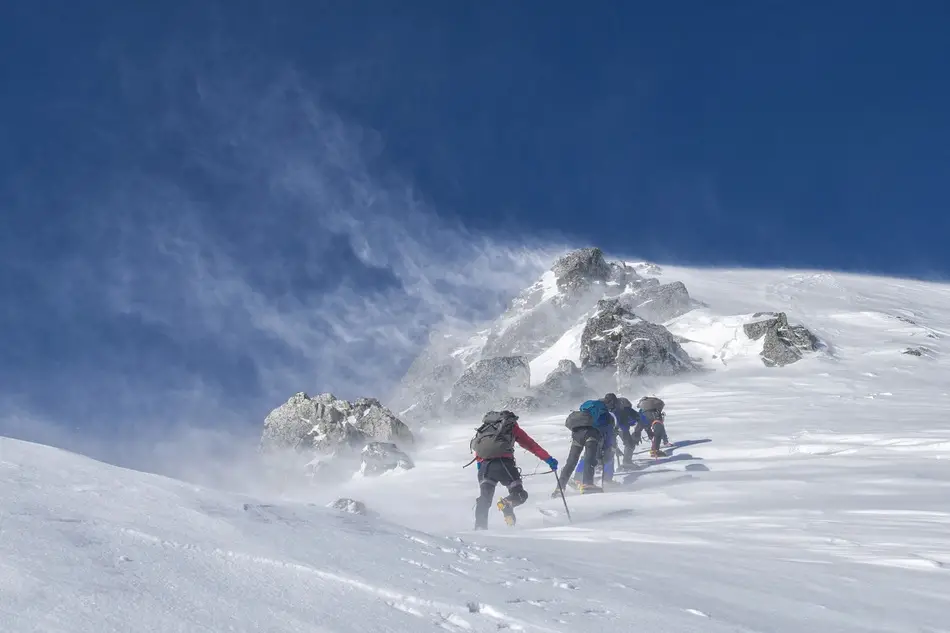
Conor Lodge and Adam Herman: A Hairline Between Life and Death
No list of mountain survival stories is complete without this real tale. We have all seen videos of the destructive and unstoppable power of an avalanche, but Conor Lodge, 22 and Adam Herman, 24, know firsthand what it is like to live through one. The two men, along with their longtime friends Rich and Tristen were hiking down Mount Washington, in New Hampshire, and were passing through Tuckerman Ravine when the foursome decided to split up so that each pair could journey at their own pace and enjoy the passing of the day in their own way. They had decided that at the fork in the trail they would meet up once more to finish the journey down as a group.
It was a good plan until the ground decided to flatten out beneath the feet of Adam and Conor. All of a sudden, they were being spilt down the mountainside in a blur of white. When it was over, Adam could see a boot sticking out of the snow. The force of the impact had taken it off his foot. He was soon found by Adam, who seemed at first unscathed, except for the fact he had no idea who Adam was. The impact had concussed him, and he was suffering from concussive amnesia, a condition which Adam, in his experience, knew would pass in a short time as long as he could keep Conor awake.
Soon the two were having to wait it out as they hoped Rich and Tristen were getting help as fast as possible. “I’m at peace with dying,” Conor said to Adam as they waited in the snow, but this was not a day to die and they managed to stay alive, with a massive concussion for Conor and a broken arm and fractured back for Adam, till they could be rescued. Their fall was estimated at more than 800 feet, but through friendship, they managed to survive.
Joshua Prestin: Alone and Scared on the Ledge
Some survival stories have a happy ending, some have endings that are not so sunny. Such is the case of Joshua Prestin who watched as his brother disappear down the side of the cliff. It was a simple repel, but something went wrong. Louis’ rope slid out of the sling, Joshua looked over the side to see if he was OK, but he couldn’t see anything through the fog below. He called out till his voice failed him, but there was no response.
Joshua was alone, night would fall soon, and he was on a ledge little more than 8 feet wide. All he had was one rope, a few matches, and medkit along with some basic foodstuffs and a handful of basic climbing supplies. He would have to figure a way to get out of this on his own, and if possible, get to his injured brother. At the core, he had to survive for five days, till the family realized they were not returning as planned and wasn’t sure how that would happen. Through determination and will Joshua had to survive and find out if his brother was alive.
He remained on that narrow shelf for 6 days. He had to endure rain, darkness and anguish. He was terrified that no rescue will come for him. Water and food were running low. Eventually, he was picked up by a helicopter, who spotted his brother’s body below.
Lorraine Johnson: Time is Running Out
Other times an animal attack is so sudden that you might not even have time to think about it before it’s already happened. Such is the story of Lorraine Johnson, 50, who didn’t realize when she woke up that day that she would later be playing a game of beat the clock with her own body, but that’s exactly what happened. She had always heard that a rattlesnake will give a loud warning by shaking its tail before it strikes, but on this day, 23 April 2010, at 4 p.m., that warning never came.
While backpacking in Franklin Canyon Park, just north of Los Angeles, the viper, camouflaged in the trailside brush, leapt out and attacked. She had stepped directly on the tail of the snake without realizing it. As she looked down stunned, watching her attacker slither away, she knew that she didn’t have much time. Being of slight stature, only 5’4”, it didn’t take long for the toxins to begin racing through her system.
Her body started to shut down, the Mojave Green Rattler that had bit her packed a serious punch and it was a long way back to help. She made it, but had to be resuscitated twice on the way to the emergency room by paramedics. Her experience and skills as a hiker, let her survive this unfortunate chance encounter with one of the deadliest snakes on the planet, right in the backyard of a massive urban landscape.
Final Words
And there you have it, 20 true survival stories in the wilderness. The human spirit, the will to survive and persevere, kept all these brave people alive, even when the odds were stacked against them. We have much to learn from their stubbornness and resilience.
My advice? When you’re out in the wild, be prepared for the worst. You can even test and challenge yourself by going on a survival vacation. Additionally, read my guide on how to survive on a deserted island and how to survive extreme weather. Have the right knowledge and the right gear that will keep you safe, no matter what happens. And always tell someone where you’re heading. Stay safe and stay alert!

